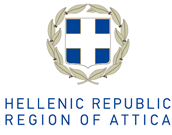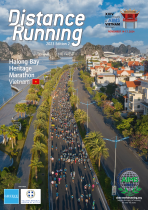Features Ladakh Marathon & Ultra
05 October 2015, 7am
Local advantage
Ladakh Marathon
Sun 13 September 2015
Local runners continue to dominate at the Ladakh Marathon. Katharina Leuthner from Austria was the only non-Ladakhi to earn a podium finish at the fourth edition of the event. Leuthner had run 10 marathons before but this was her first at altitude. She finished third among women, saying: “This is the toughest race I have run so far.” Runners from 22 countries participated.
Situated in the far north of India, Ladakh is a blend of the high Himalaya and the western extreme of the Tibetan plateau and a prized tourist destination. The landscape is often likened to moonscape. Average elevation exceeds 3000m (10,000’) and the highest point is the Saser Kangri massif of the east Karakorum, which rises to over 7600m (25,000’). Mountains to the south and south west of Ladakh cut off the rain-bearing monsoon clouds: barring freak weather Ladakh is a high-altitude cold desert. The air is dry and summers are pleasant to hot. Winters are cold. The Indus River flows close to Leh, the region’s main town. Culturally Ladakh used to be the meeting point of influences from India, Tibet and Central Asia.
In South Asia’s contemporary geo-politics Ladakh occupies a strategic position. It is where the borders of Pakistan, India and China meet and besides being a tourist destination Leh is also a major military base. Ladakh has one of the lowest population counts and population densities in India making it a valued counterpoint to the crowding and congestion elsewhere in the sub-continent. It is is a hub for adventure tourism: people come for trekking, mountaineering, river rafting, cycling — and of late, for running.
Leh, Ladakh’s main town, now synonymous with running at altitude in India, is where the Marathon has been held for the last four years. The event is organised by Rimo Expeditions, one of India’s biggest outdoor companies. Chewang Motup, its co-founder, was instrumental in supporting and growing ice hockey in Ladakh. After that sport acquired a sufficient grounding Motup sought a new project and in September 2012 Rimo Expeditions staged the first Ladakh Marathon.
The Marathon title includes three other associated events: a 7km (shortened from the original 10km), a half marathon and a 72km-ultra marathon over the 5370m (17,617’) high Khardung-La pass. There were 1500 runners for the 10km, half marathon and full marathon in the first year. Overall participation rose to 2200 in 2013 and 3020 in 2014. For the September 2015 edition the organisers were talking of “close to 4000”. The Khardung-La Challenge (as the ultra is called) has also increased numbers: from 11 in 2012 to 33 in 2013 and 47 in 2014. For 2015 the number was almost 90. The Ladakh Marathon attracts runners from Ladakh, from other parts of India and from overseas. It has been internationally certified, as a member of AIMS, since 2014.
The Khardung-La Challenge straddles two sides of the mountain bordering Leh to the North. It starts in Khardung village at an altitude of 4000m (13,100’). Runners climb the pass through North Pullu (4700m,15,500’) to the road summit of the pass before descending to South Pullu (4600m, 15300ft) and concluding their 72km epic at the Ladakh Public School in Leh at 3400m/11,200’. The overwhelming sensation of the Challenge is losing oneself in the vast mountainous landscape.
The full marathon, half marathon and the 7km are all run on the south side of the mountain, in and around Leh. The Indus is the main geographical feature common to the three events. The Ladakh Marathon encompasses all of Leh’s varied geography from its high mountain pass to its famous river. The full marathon starts at Shanti Stupa (3600m/11,800’) overlooking Leh. Runners descend to the ‘lowlands’ (relatively speaking) of the Indus and cross the river twice (near Markalak and at Choglamsar), eventually climbing back up to finish at the Ladakh Public School. The half marathon begins at Shanti Stupa but stays to the north side of the Indus to reach the same finish by a shorter route.
Organising the Ladakh Marathon is complicated because everything from small bottles of water to T-shirts have to be trucked or airlifted into Leh from lowland India. Medical assistance is crucial. Leh lies at such altitude that all outsiders running here are coming from lower elevations. For the 2015 race organisers requisitioned 14 ambulances. The military also made its medical teams available. As part of the race’s community involvement programme some of the aid stations en route are operated by the villages through which the race passes. The aid stations for the Khardung La Challenge were the responsibility of Kyagar in the Nubra valley, race founder Motup’s home village.
Timed for when Leh’s tourism season begins to taper the Ladakh Marathon also helps extend that season and related businesses for a little longer.
Alongside the Ladakh Marathon, Motup and Rimo have pursued a smaller, less visible project. The event’s first edition in 2012 used a poster proclaiming: ‘An Olympian from Ladakh by 2020’. With this goal in mind the organisers are trying to groom a team of good local runners. Podium finishers at the Ladakh Marathon have been mostly Ladakhis. Starting in January 2013 the organizers have been taking the top finishers to participate in the Standard Chartered Mumbai Marathon — India’s biggest running event. Plans have been made to systematically train Ladakhi runners so that in around two years’ time they will be able to compete with the elite runners that Motup hopes to invite to Ladakh Marathon. When the world arrives to run in Leh, Ladakh should be ready to hold its ground.
Result
marathon
Men
| 1 | Fayaz | ALI | IND | 3:02:31 |
| 2 | Padma | NAMGAIL | IND | 3:07:30 |
| 3 | Tsering | TONDUP | IND | 3:12:49 |
| 4 | Jigmet | NAMGAIL | IND | 3:16:18 |
| 5 | Nawaz | HUSSAIN | IND | 3:18:12 |
Women
| 1 | Tsetan | DOLKAR | IND | 3:40:37 |
| 2 | Jigmet | DOLMA | IND | 3:42:47 |
| 3 | Katharina | LEUTHNER | AUT | 3:47:13 |
| 4 | Sonam | CHUSKIT | IND | 4:23:13 |
| 5 | Carole | SUHNER | XXX | 4:54:52 |
Half marathon
Men
| 1 | Tanzin | NURBU | IND | 1:22:47 |
| 2 | Nawang | TSERING | IND | 1:23:26 |
| 3 | Tashi | PALDAN | IND | 1:24:50 |
Women
| 1 | Diskit | DOLMA | IND | 1:48:05 |
| 2 | Tsering | DOLKAR | IND | 1:50:53 |
| 3 | Stanzin | CHODOL | IND | 1:51:30 |
72km challenge
Men
| 1 | Tsewang | TOKDEN | IND | 6:33:41 |
| 2 | Rigzin | NORBU | IND | 6:41:25 |
| 3 | Tsering | STOBGAIS | IND | 7:08:43 |
Women
| 1 | Skalzang | DOLMA | IND | 10:58 |
| 2 | Khushboo | VAISH | IND | 13:39:12 |
| 3 | Tsetan | LAMO | IND | 13:41:18 |







